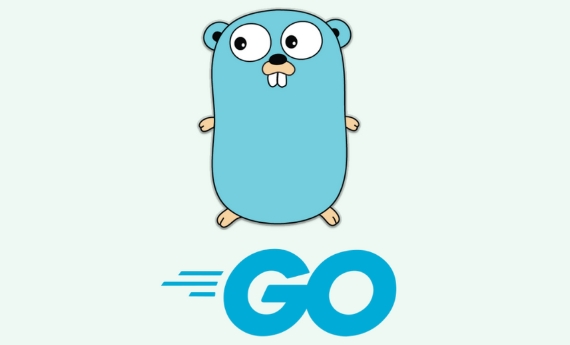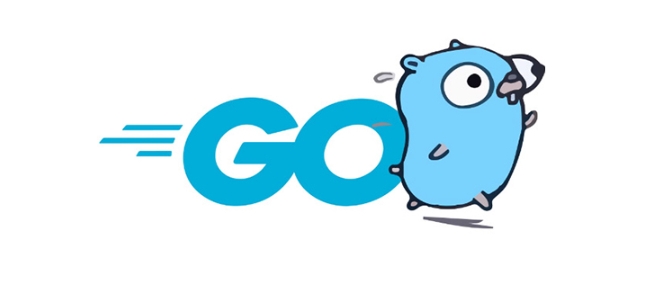Go does not adopt traditional object-oriented programming, but achieves similar goals through combination, interface and methods: 1. Use structures and methods to simulate objects to implement data and behavior encapsulation; 2. Use structure embedding to realize combination rather than inheritance, and use fields and methods to improve simplified code; 3. Use implicitly implemented interfaces to achieve polymorphism without explicit declaration; 4. There is no constructor, but the object can be initialized through factory functions starting with New. Go implements the core OOP idea in a more concise and flexible way, emphasizing behavior rather than hierarchy, proving that clear and reusable code can be written without classes.

Go doesn't follow traditional object-oriented programming (OOP) the way languages like Java or Python do. There are no classes, no inheritance, and no constructors in the classical sense. But that doesn't mean Go can't be used in an object-oriented way — it just takes a different approach.

Instead of forcing OOP patterns, Go embraces composition, interfaces, and methods to achieve similar goals with simplicity and clarity. Here's how Go handles key OOP concepts:
1. Structs Methods = Objects (Kind Of)
In Go, you define data using struct s, and you can attach functions to them using methods . This combination mimics what we think of as "objects" in other languages.

type Person struct {
Name string
Age int
}
func (p Person) Greet() {
fmt.Printf("Hi, I'm %s and I'm %d years old.\n", p.Name, p.Age)
} Here, Person is a struct, and Greet is a method bound to it. The (p Person) is called a receiver — it's how Go associates the function with the type.
This gives you encapsulation of data and behavior, one of the core ideas in OOP.

Note: You can use pointer receivers (
*Person) when you want to modify the struct or avoid copying large structs.
2. Composition Over Inheritance
Go does not support inheritance . Instead, it promotes composition — embedding one struct inside another.
type Address struct {
City string
State string
}
type Employee struct {
Person // Embedded struct
Address // Embedded
Salary float64
} Now, an Employee "has a" Person , not "is a" Person . But thanks to embedding, you can access Person fields directly:
e := Employee{
Person: Person{Name: "Alice", Age: 30},
Address: Address{City: "Seattle", State: "WA"},
Salary: 75000,
}
fmt.Println(e.Name) // Works! Promoted field from Person
e.Greet() // Also works — promoted methodThis is called promotion — Go promotes fields and methods of embedded types, making composition feel natural and clean.
This design avoids the complexity of deep inheritance hierarchies and the "diamond problem."
3. Interfaces: Polymorphism Without Classes
Go's interfaces are where its OOP-like behavior really shines. An interface defines behavior (methods), and any type that implements those methods automatically satisfy the interface — no implements keyword needed.
type Speaker interface {
Speak() string
}
type Dog struct{}
func (d Dog) Speak() string { return "Woof!" }
type Cat struct{}
func (c Cat) Speak() string { return "Meow!" } Now both Dog and Cat satisfied the Speaker interface implicitly.
You can write functions that work with any Speaker :
func MakeSound(s Speaker) {
fmt.Println(s.Speak())
}
MakeSound(Dog{}) // Woof!
MakeSound(Cat{}) // Meow!This is polymorphism — same interface, different behaviors — but without inheritance or class hierarchies.
Go's interfaces are usually small (one or two methods), which makes them easy to implement and compose.
4. No Constructors, But You Can Fake It
Go doesn't have constructors, but you typically use factory functions to initialize complex types:
func NewPerson(name string, age int) *Person {
if age < 0 {
panic("invalid age")
}
return &Person{Name: name, Age: age}
} Calling NewPerson("Bob", 25) is idiomatic and gives you control over initialization.
The
Newprefix is a convention in Go for factory functions.
Summary
Go's approach to OOP is pragmatic and minimal:
- ? Encapsulation via structs and methods
- ? Composition instead of inheritance
- ? Polymorphism via interfaces (implicit satisfaction)
- ? No classes , no inheritance , no method overloading
You still get the benefits of OOP — code reuse, modularity, polymorphism — but with less boilerplate and fewer pitfalls.
It's not classic OOP. It's Go's version: simple, composable, and focused on behavior rather than hierarchy.
Basically, Go says: “You don't need classes to write clean, reusable code.” And in practice, it works.
The above is the detailed content of Go's Approach to Object-Oriented Programming. For more information, please follow other related articles on the PHP Chinese website!

Hot AI Tools

Undress AI Tool
Undress images for free

Undresser.AI Undress
AI-powered app for creating realistic nude photos

AI Clothes Remover
Online AI tool for removing clothes from photos.

Clothoff.io
AI clothes remover

Video Face Swap
Swap faces in any video effortlessly with our completely free AI face swap tool!

Hot Article

Hot Tools

Notepad++7.3.1
Easy-to-use and free code editor

SublimeText3 Chinese version
Chinese version, very easy to use

Zend Studio 13.0.1
Powerful PHP integrated development environment

Dreamweaver CS6
Visual web development tools

SublimeText3 Mac version
God-level code editing software (SublimeText3)

Hot Topics
 Strategies for Integrating Golang Services with Existing Python Infrastructure
Jul 02, 2025 pm 04:39 PM
Strategies for Integrating Golang Services with Existing Python Infrastructure
Jul 02, 2025 pm 04:39 PM
TointegrateGolangserviceswithexistingPythoninfrastructure,useRESTAPIsorgRPCforinter-servicecommunication,allowingGoandPythonappstointeractseamlesslythroughstandardizedprotocols.1.UseRESTAPIs(viaframeworkslikeGininGoandFlaskinPython)orgRPC(withProtoco
 Understanding the Performance Differences Between Golang and Python for Web APIs
Jul 03, 2025 am 02:40 AM
Understanding the Performance Differences Between Golang and Python for Web APIs
Jul 03, 2025 am 02:40 AM
Golangofferssuperiorperformance,nativeconcurrencyviagoroutines,andefficientresourceusage,makingitidealforhigh-traffic,low-latencyAPIs;2.Python,whileslowerduetointerpretationandtheGIL,provideseasierdevelopment,arichecosystem,andisbettersuitedforI/O-bo
 Is golang frontend or backend
Jul 08, 2025 am 01:44 AM
Is golang frontend or backend
Jul 08, 2025 am 01:44 AM
Golang is mainly used for back-end development, but it can also play an indirect role in the front-end field. Its design goals focus on high-performance, concurrent processing and system-level programming, and are suitable for building back-end applications such as API servers, microservices, distributed systems, database operations and CLI tools. Although Golang is not the mainstream language for web front-end, it can be compiled into JavaScript through GopherJS, run on WebAssembly through TinyGo, or generate HTML pages with a template engine to participate in front-end development. However, modern front-end development still needs to rely on JavaScript/TypeScript and its ecosystem. Therefore, Golang is more suitable for the technology stack selection with high-performance backend as the core.
 How to install Go
Jul 09, 2025 am 02:37 AM
How to install Go
Jul 09, 2025 am 02:37 AM
The key to installing Go is to select the correct version, configure environment variables, and verify the installation. 1. Go to the official website to download the installation package of the corresponding system. Windows uses .msi files, macOS uses .pkg files, Linux uses .tar.gz files and unzip them to /usr/local directory; 2. Configure environment variables, edit ~/.bashrc or ~/.zshrc in Linux/macOS to add PATH and GOPATH, and Windows set PATH to Go in the system properties; 3. Use the government command to verify the installation, and run the test program hello.go to confirm that the compilation and execution are normal. PATH settings and loops throughout the process
 Resource Consumption (CPU/Memory) Benchmarks for Typical Golang vs Python Web Services
Jul 03, 2025 am 02:38 AM
Resource Consumption (CPU/Memory) Benchmarks for Typical Golang vs Python Web Services
Jul 03, 2025 am 02:38 AM
Golang usually consumes less CPU and memory than Python when building web services. 1. Golang's goroutine model is efficient in scheduling, has strong concurrent request processing capabilities, and has lower CPU usage; 2. Go is compiled into native code, does not rely on virtual machines during runtime, and has smaller memory usage; 3. Python has greater CPU and memory overhead in concurrent scenarios due to GIL and interpretation execution mechanism; 4. Although Python has high development efficiency and rich ecosystem, it consumes a high resource, which is suitable for scenarios with low concurrency requirements.
 How to build a GraphQL API in golang
Jul 08, 2025 am 01:03 AM
How to build a GraphQL API in golang
Jul 08, 2025 am 01:03 AM
To build a GraphQLAPI in Go, it is recommended to use the gqlgen library to improve development efficiency. 1. First select the appropriate library, such as gqlgen, which supports automatic code generation based on schema; 2. Then define GraphQLschema, describe the API structure and query portal, such as defining Post types and query methods; 3. Then initialize the project and generate basic code to implement business logic in resolver; 4. Finally, connect GraphQLhandler to HTTPserver and test the API through the built-in Playground. Notes include field naming specifications, error handling, performance optimization and security settings to ensure project maintenance
 Choosing a Microservice Framework: KitEx/GoMicro vs Python Flask/FastAPI Approaches
Jul 02, 2025 pm 03:33 PM
Choosing a Microservice Framework: KitEx/GoMicro vs Python Flask/FastAPI Approaches
Jul 02, 2025 pm 03:33 PM
The choice of microservice framework should be determined based on project requirements, team technology stack and performance expectations. 1. Given the high performance requirements, KitEx or GoMicro of Go is given priority, especially KitEx is suitable for complex service governance and large-scale systems; 2. FastAPI or Flask of Python is more flexible in rapid development and iteration scenarios, suitable for small teams and MVP projects; 3. The team's skill stack directly affects the selection cost, and if there is already Go accumulation, it will continue to be more efficient. The Python team's rash conversion to Go may affect efficiency; 4. The Go framework is more mature in the service governance ecosystem, suitable for medium and large systems that need to connect with advanced functions in the future; 5. A hybrid architecture can be adopted according to the module, without having to stick to a single language or framework.
 Go sync.WaitGroup example
Jul 09, 2025 am 01:48 AM
Go sync.WaitGroup example
Jul 09, 2025 am 01:48 AM
sync.WaitGroup is used to wait for a group of goroutines to complete the task. Its core is to work together through three methods: Add, Done, and Wait. 1.Add(n) Set the number of goroutines to wait; 2.Done() is called at the end of each goroutine, and the count is reduced by one; 3.Wait() blocks the main coroutine until all tasks are completed. When using it, please note: Add should be called outside the goroutine, avoid duplicate Wait, and be sure to ensure that Don is called. It is recommended to use it with defer. It is common in concurrent crawling of web pages, batch data processing and other scenarios, and can effectively control the concurrency process.






